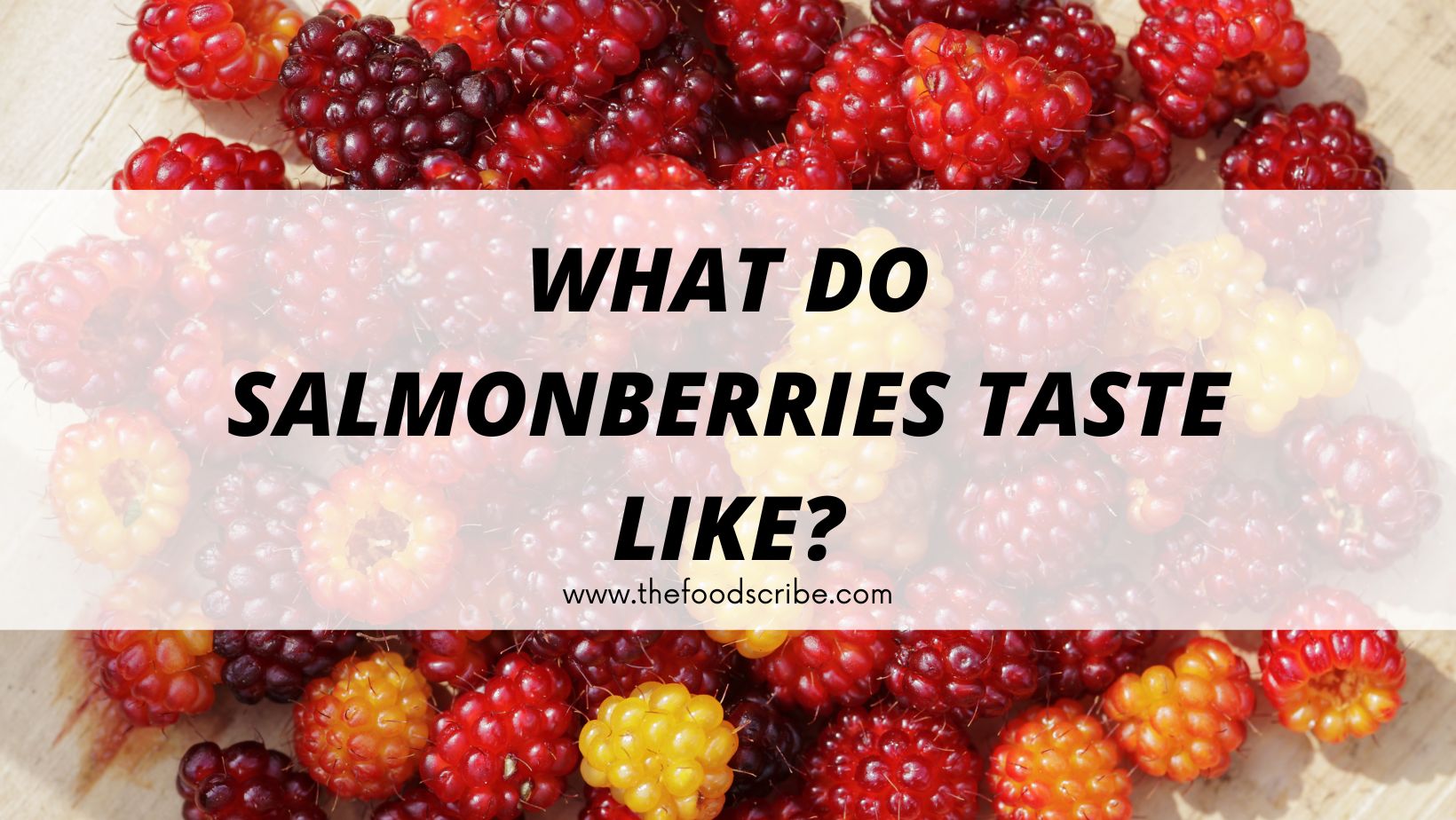Salmonberries are a type of berry that grows on plants native to the Pacific Northwest of North America. They have a unique, tangy flavor and are closely related to raspberries. Although salmonberries are delicious and versatile, many people don’t know much about the nutrition facts, and it can be difficult to find them in stores.
In this blog post, we’ll take a look at everything you need to know about salmonberries.
What are Salmonberries and What are the health benefits of eating them?
Salmonberries are small, round fruit that is reddish in color. They are closely related to blackberries, raspberries, and blueberries, and are sometimes marketed under the name “Lowbush Blueberries.” They are full of antioxidants, which help our bodies prevent disease.
Salmonberries are also rich in vitamin C and Vitamin K, which help our bodies break down bone and brain cells, respectively. Salmonberries are an excellent source of fiber, so eating salmonberries on a regular basis can help keep our digestive system healthy and regular.
What do salmonberries taste like and what are the best ways to eat them?
What do salmonberries taste like and what are the best ways to eat them? Salmonberries are a type of currant that grows in temperate regions.
- They are similar to cranberries and, like cranberries, have tiny seeds.
- Salmonberries have an appealing, slightly tart, sweetness. They can be eaten fresh or dried and can be used in tea or baked goods.
- Salmonberries are also best eaten in their natural state. They can be eaten raw, or cooked into jellies or jams.
- Salmonberries can also be used to make wine.
If purchasing fresh salmonberries, make sure they are firm. Avoid berries that are shriveled or decaying.
What is the texture of Salmonberry?
The texture of salmonberry is firm and juicy, with a slightly thicker skin than raspberries. Salmonberries resemble blackberries and raspberries but have a milder flavor. They have a fairly dark maroon color, with some shades tending towards purple.
Salmonberries are harvested in July and August, right after they are ripe. The berries are usually picked by hand, although commercial harvests often use mechanical harvesting devices. Once they are fully mature, the berries are ready to collect. They will keep for a few days in the refrigerator but are best enjoyed when they are fresh.
Salmonberries have a mild, sweet flavor; they are juicier than many other berries, with a slightly thicker skin than raspberries.
Why Salmonberries are popular?
Salmonberries are popular berries that are native to the Pacific Northwest. They are called salmonberries because they have shades of red and purple like the salmon fish. Salmonberries are a popular fruit as they can be picked in the wild.
- Salmonberries are low in calories and contain significant amounts of vitamin C.
- They can be eaten raw or cooked. Salmonberries can be cooked into jams and pies, or they can be made into juices as they are filled with water. Salmonberry juice is often used in cocktails.
- Salmonberries also can be eaten raw as they are sweet and easily digested. When they are cooked, they will turn soft and juicy.
- Salmonberries can be stored frozen as they are good in cool weather. They can also be stored in the refrigerator as they stay fresh for 10-14 days.
- Salmonberries are considered low-allergenic, which means they are not likely to cause allergies.
- Salmonberries are popular berries because they can be picked in the wild and grown in gardens. They are also popular because they are low in calories and contain significant amounts of vitamin C.
What to eat with Salmonberries?
Salmonberries are a beautiful and versatile berry that you can add to your diet. They make a great addition to salads and smoothies, but you can also add them to desserts and other dishes. Salmonberries can be used in many different recipes and are easy to prepare.
Salmonberries can be used in many different recipes. They are commonly used to make jams, jellies, and preserves, but you can also add them to muffins, cakes, oatmeal, and other recipes. You can add salmonberries to smoothies or add them to salads.
Salmonberries add a beautiful color, a gorgeous flavor, and abundant nutrients to your diet. They are full of vitamins, minerals, and antioxidants; as a result, they are a great addition to any diet.
Salmonberries can be frozen or refrigerated. They can be added to smoothies, cakes, salads, oatmeal, and a variety of other dishes. Salmonberries add a beautiful color, a delicious flavor, and abundant nutrients to your diet.
Salmonberries can be frozen or refrigerated. They can be added to smoothies, cakes, salads, oatmeal, and a variety of other dishes.
How to prepare Salmonberries for eating?

Salmonberries are a fruit-bearing shrub that is native to the Pacific Northwest region of North America. Although they can be harvested and eaten straight from the plant, they are normally cooked or eaten in the form of jam or jelly.
Salmonberries are a traditional food of many Indigenous groups in the region, including the Salish people, Haida people, Coast Salish people, Klallam people, and Tlingit people.
Salmonberries are typically harvested during the summer when the berries are ripe. The best way to prepare salmonberries is to freeze them for later use. This prevents them from spoiling and allows them to be enjoyed all year long.
Salmonberries can be frozen in convenient quantities using freezer bags and ice. Simply place the berries in the freezer until the berries are fully frozen. This typically takes 24 hours. Then, remove the berries from the freezer and place them into freezer bags.
Tips for storing and enjoying salmonberries.
Salmonberries are an intentionally cultivated berry variety that is found in the western U.S., as well as New Zealand. These fruits are also known as olallieberries and are quite tasty. However, they require special care and storage to keep them in their best condition.
Here are some tips for storing and enjoying salmonberries.
Store them properly:
Salmonberries should be stored in cool temperatures (below 60 degrees Fahrenheit) to keep them crisp and fresh. Once ripe, they should be stored in the refrigerator
Eat them fresh:
Salmonberries should be eaten as fresh as possible. Once they have ripened, you can freeze them or use them to make jams or preserves. However, fresh salmonberries are delicious when eaten while still firm.
Prepare them properly:
Salmonberries can be eaten raw or cooked. Although you can also cook them, the best way to eat them is raw. To do this, wash them and then cut them in half. Do not remove the seeds. Then, squeeze some lemon juice or vinegar over them. Add salt and pepper, if desired, and eat them right away.
You can serve them with a sarsaparilla drink or add some to a salad. Salmonberries are also great in fruit salads.
Wrapping Up
Salmonberries, like all berries, are low in calories and are a great source of antioxidants and fiber. They are wonderful for garnishing or adding to smoothies or desserts. If you’re interested in growing salmonberries, you’ll likely need to grow them in your garden.
If, however, you’re looking for a convenient way to add these tasty fruits to your diet, you can order them online. However, if you’re looking for the freshest salmonberries, your best bet is to grow them yourself. I hope this article has been helpful. Let me know in the comments below – I’d love to hear from you!





Leave a Reply